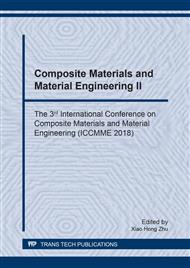p.194
p.203
p.209
p.215
p.221
p.229
p.235
p.243
p.249
Evaluations of some Stochastic Fatigue Crack Growth Models through Experimental Verification
Abstract:
The study is focused on the comparisons among three stochastic fatigue crack growth models through evaluations of experimental data. The first model assumed that the coefficient and exponent parameters of Paris-Erdogan law are mutually dependent normal random variables. The second model assumed that the fatigue crack growth rate equals to the deterministic Paris-Erdogan law multiplied by a stationary log-normal random factor while the third model proposed by the author was assumed that the fatigue crack growth rate equals to a deterministic polynomial in terms of fatigue crack size multiplied by a stationary log-normal random factor. Compact-tension specimens cut from a 2024-T351 aluminum-alloy plate were used for fatigue crack growth experiments under constant loads performed on thirty specimens. The normal probability paper for the first model was investigated to show the validity of the normal random parameter, and the log-normal probability papers for the second and third models were also investigated to show the validity of log-normal assumption of the random factors. The investigations on the probability of crack exceedance and distribution of random time of the three models were also made, and the comparisons of the results for all models were made as well.
Info:
Periodical:
Pages:
221-228
Citation:
Online since:
August 2018
Authors:
Price:
Сopyright:
© 2018 Trans Tech Publications Ltd. All Rights Reserved
Share:
Citation:


